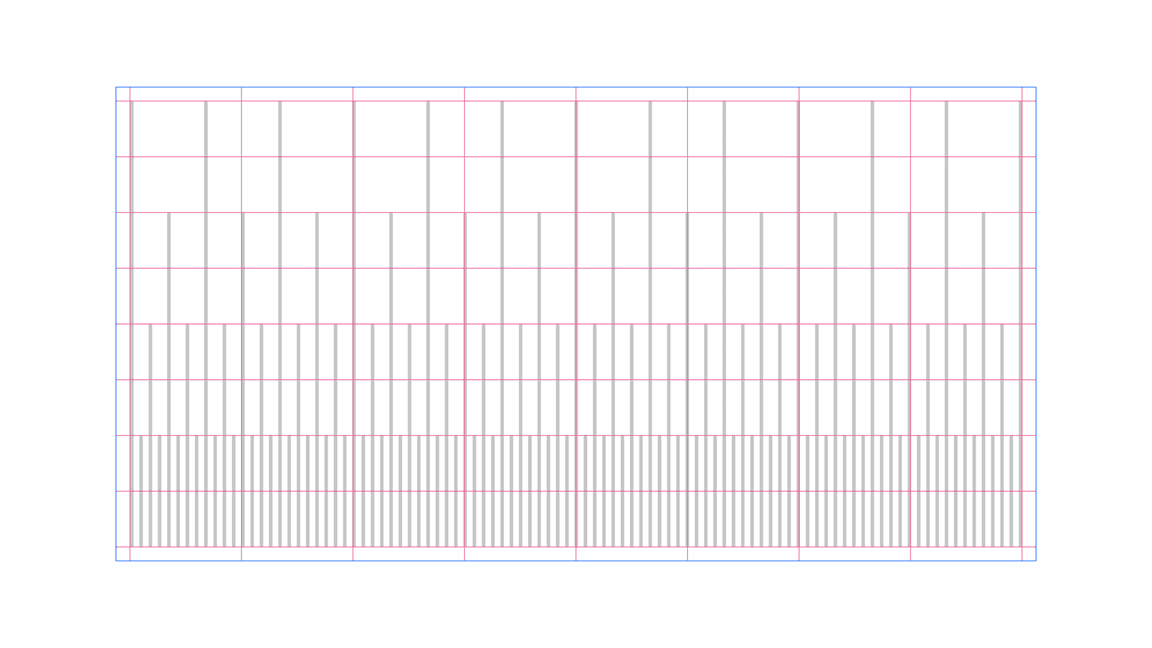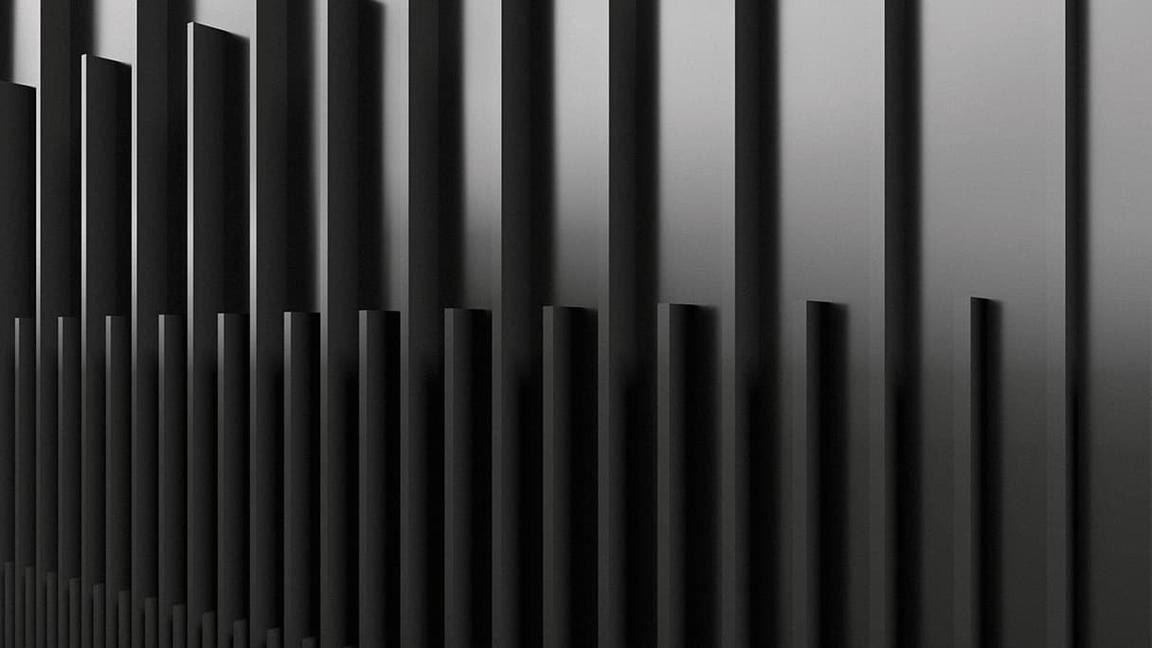Pattern
IBM creates intelligent solutions and products predicated on finding patterns—in data, human behavior and the world around us. Understanding the rhythm of patterns helps us build tools that provide insight for our clients and our business. In keeping with this point of view, pattern plays a critical role in our architecture. As an element of interior design, it adds textural dimension to our space that references and reflects our identity.
Use case examples
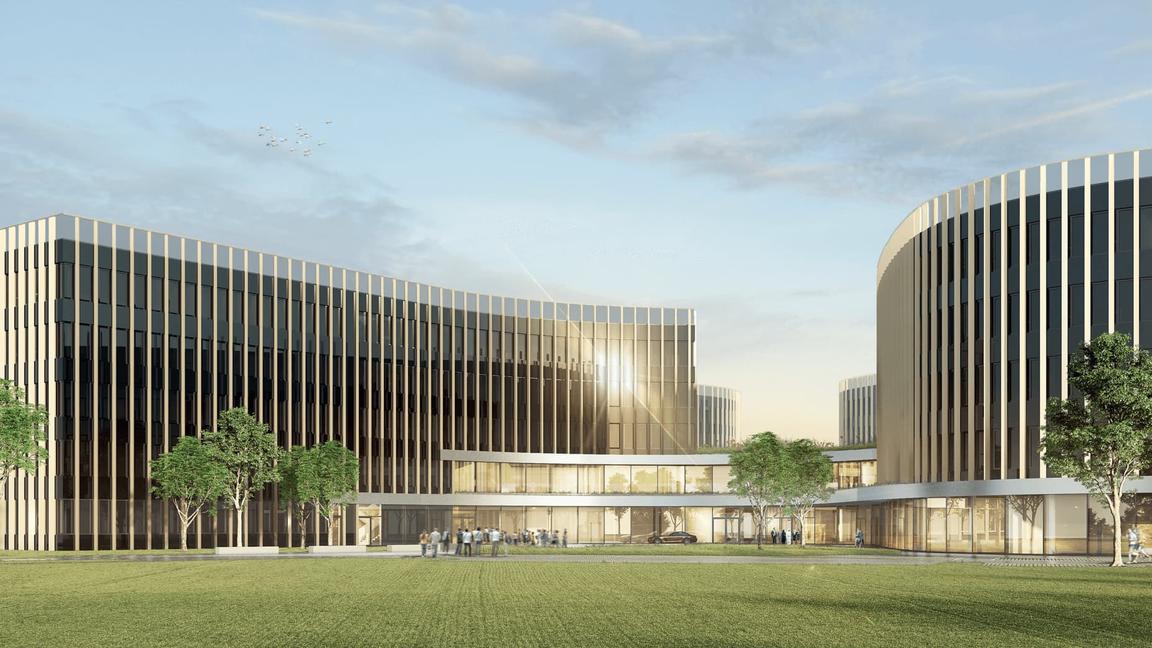
IBM Ehningen, Germany
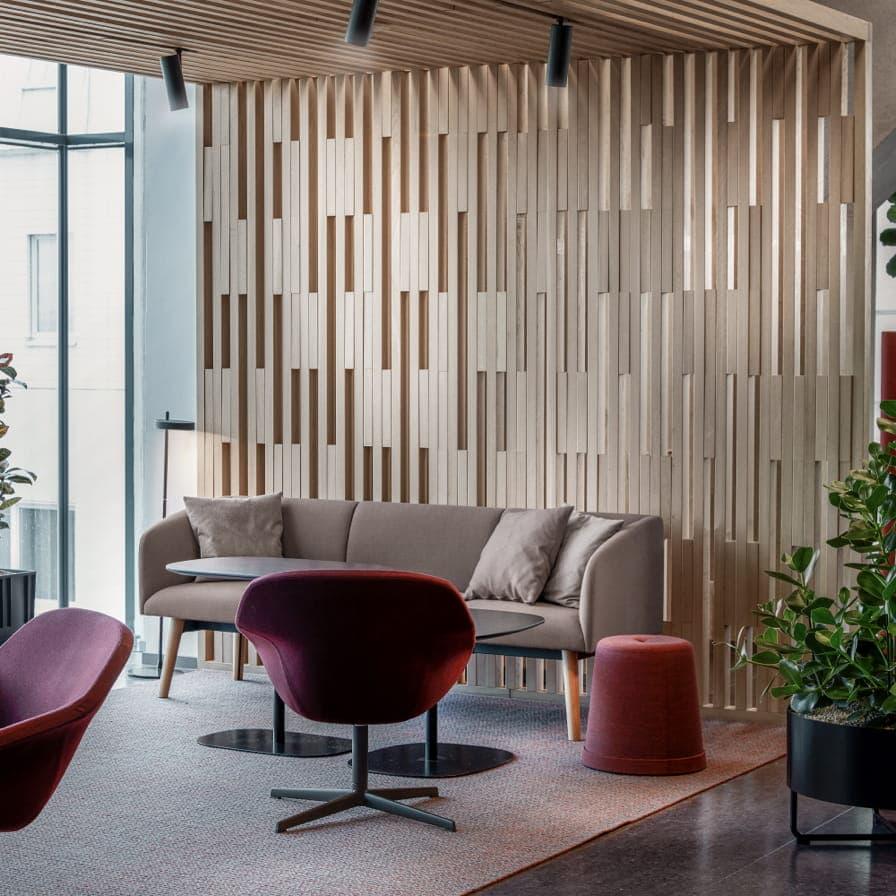
IBM Malmo, Sweden
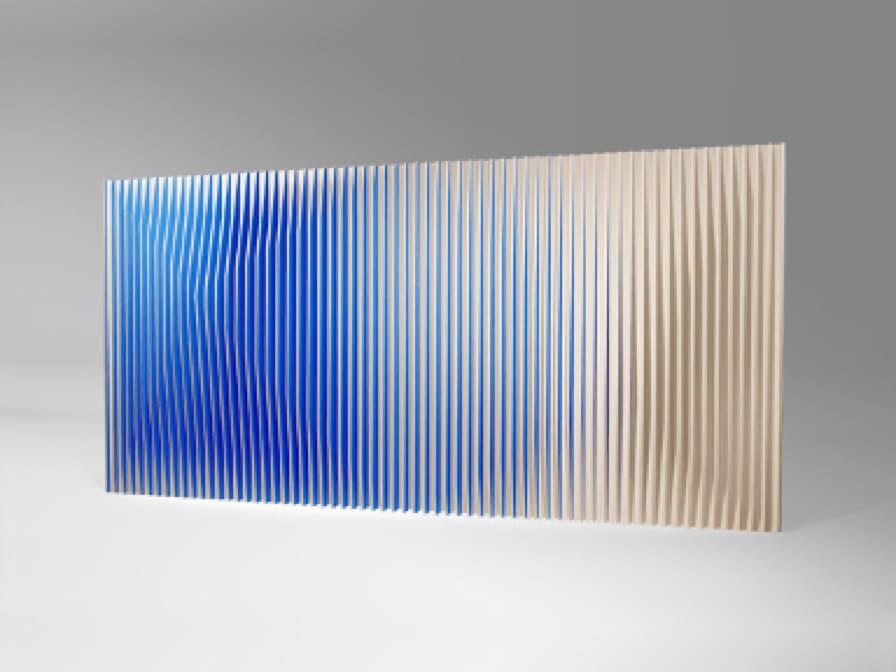
A volumetric pattern wall

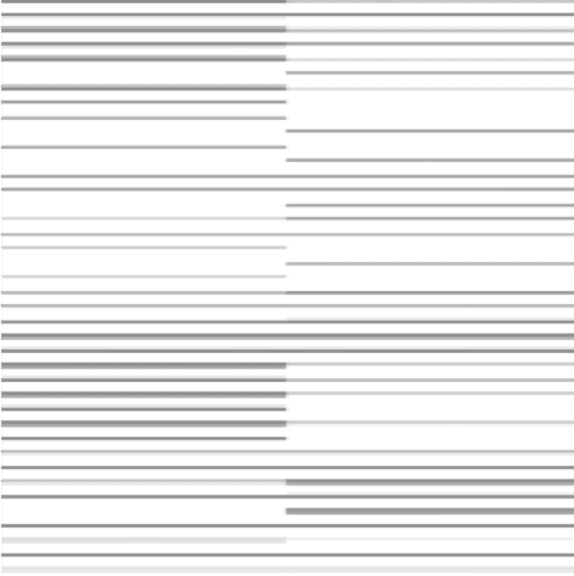
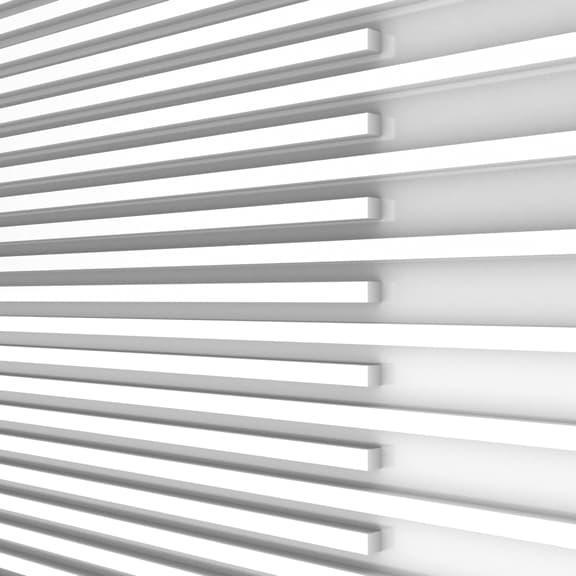
Pattern and the 2x Grid
The IBM 2x Grid is the framework for all the visual design at IBM. No matter what medium or application you’re working within, the 2x Grid provides structure and guidance for the execution of any creative concept. Each pattern concept should use the 2x Grid as a foundation.
Divisions of two
At the core of the 2x Grid concept is the idea of divisions of two. This concept can be applied to most surfaces, 3D objects, and architecture to create proportional relationships between various elements. Dividing a space into 2, 4, 8, 16, 32, or 64 columns provides ample flexibility to meet the needs of different use cases.
Base unit
Base units establish precision and proportional relationships for each element in the design. A base unit creates a relationship between grid proportions, dimensions of shapes and space between elements. The size of this base unit is flexible, providing versatility in design execution across a range of environments.
Pattern layouts and repeats
Use 2x Grid math—halving and doubling—and simple geometries as you create a pattern to fit a project’s needs. Limit the number of variables to build rhythm and harmony. For example, keep all slats or cuts to a unified, even width and on grid.
The 2x Grid framework also makes it easy to create patterns that seamlessly repeat. For example, you can repeat a square pattern twice to fill the grid. Use your base unit to establish comfortable margins in cases where they’re needed, such as when laser-cutting a pattern out of a substrate. The examples shown here demonstrate how to use the 2x Grid to build dynamic linear patterns.
Pattern form
Linear patterns can be dimensionally executed in a variety of ways. These executions include ceiling designs, millwork walls, screen partitions or flooring. We encourage design teams to explore unexpected or innovative pattern applications.
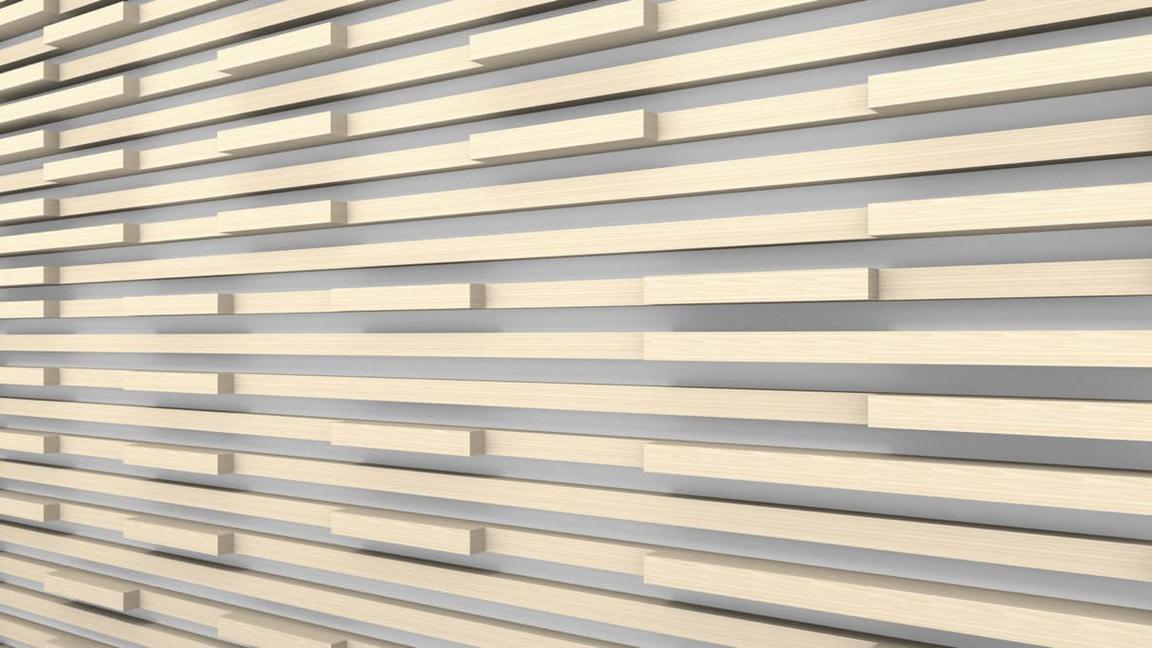
Materiality
Linear patterns lend themselves nicely to dimensional executions in a variety of substrates and finishes. Here are a few preliminary studies and examples to consider.
Wood
Wood is a forgiving material and a wonderful way to add warmth to a space. Tone-on-tone executions create subdued dimension. You can introduce different stains or materials to produce additional depth.
Metal
Machine-precision metal complements strong textures and organic materials. Consider anodized metal for a lustrous finish. Powder-coated metal is a more budget-friendly option.
Acrylic
The colors and transparency options of acrylic make it a great choice for areas filled with light. Play with layering. Consider how colorful shadows will change the experience throughout the day.
